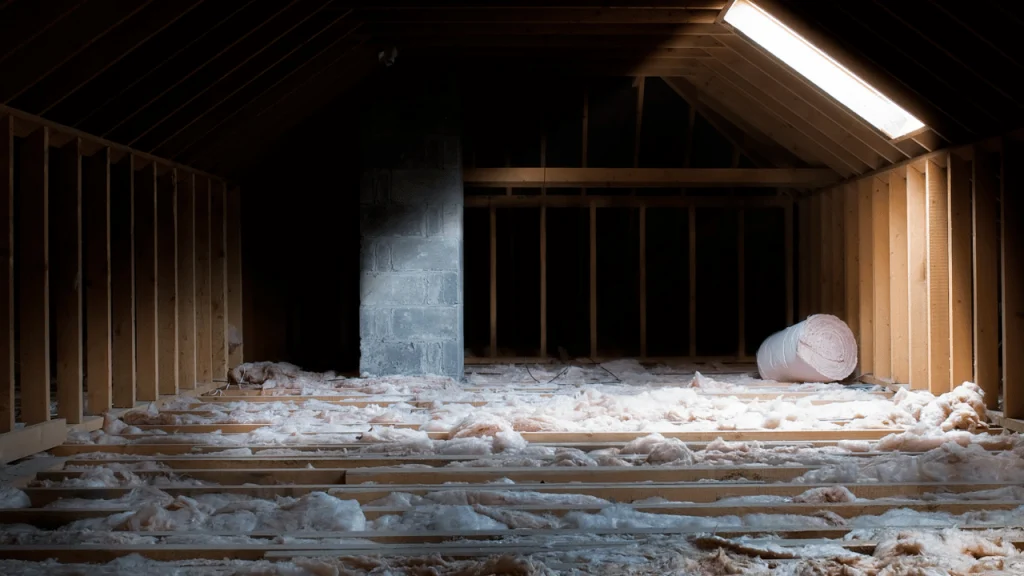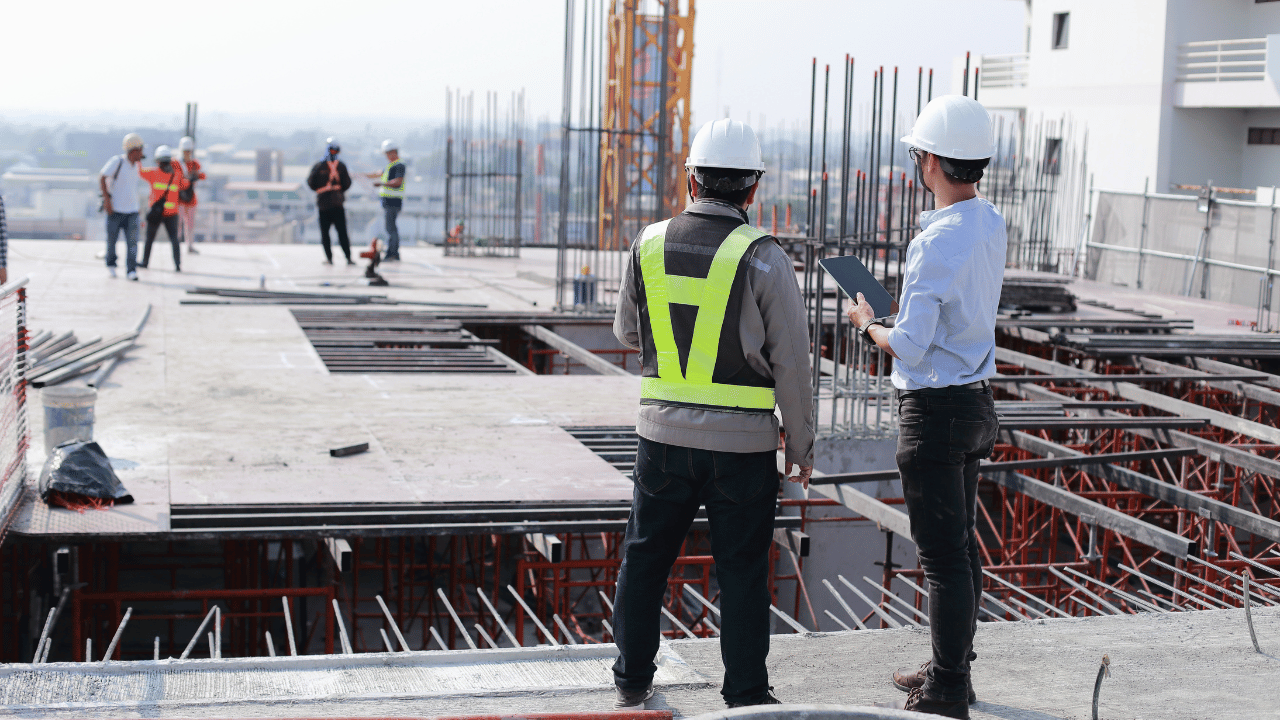
The Ultimate Guide to Attic Inspections
John Souffront

When it comes to home inspections, one often overlooked area is the attic due to its inaccessibility, lower priority compared to other areas, and lack of buyer interest, but they play a crucial role in maintaining a well-functioning home.
From insulation and ventilation to potential issues like moisture, pests, and structural integrity, the attic can have a significant impact on energy efficiency, air quality, and overall comfort.
Whether you’re looking to improve insulation, prevent mold growth, or ensure proper airflow, a thorough attic inspection is the first step toward a healthier and more efficient living space.
In this guide, we’ll shed light on why attic inspections are a crucial aspect of assessing a property’s health and how it could make all the difference in your home’s safety, energy efficiency, and long-term maintenance.
Before we delve into the details, let’s start by understanding the basics: what exactly is an attic inspection, and how does it contribute to maintaining a healthy home?
What Is Attic Inspection?
Attic Inspection is the process of carefully examining your attic to assess its condition, identify potential issues, and ensure everything is in tip-top shape.
It involves a thorough examination of the attic area to identify any potential issues or concerns related to insulation, ventilation, moisture, structural integrity, pests, and other factors that can affect the overall health and efficiency of your home
During an attic inspection, a qualified inspector will visually inspect various components such as the roof structure, insulation, ventilation systems, electrical wiring, plumbing, and potential signs of damage or deterioration.
They may also use specialized tools, like a specialized camera and equipment, to gather additional information about the attic’s condition.
Why Is An Attic Inspection So Important?
Your attic might seem like a forgotten space tucked away above your living area. However, it plays a crucial role in maintaining proper insulation, controlling moisture levels, and promoting good airflow throughout the property.
Regular attic inspections are a crucial step toward maintaining your home and ensuring its overall well-being.
Identifying Potential Problems:
Conducting thorough attic inspections allows you to identify existing or potential issues that may require attention or repairs.
From water leaks and pest infestations to inadequate insulation and ventilation problems, the attic can harbor various troubles that, if left unaddressed, could lead to costly repairs and compromise the integrity of your entire house.
Energy Efficiency and Climate Control
A well-insulated and properly ventilated attic significantly contributes to energy efficiency. It helps regulate temperature, preventing heat loss in winter and heat gain in summer.
By assessing insulation levels, detecting gaps or damage, and ensuring optimal energy performance, attic inspections can lead to significant savings on your energy bills.
Maintaining a Healthy Living Environment
Attic inspections are crucial for maintaining a healthy home. Hidden moisture problems in the attic can foster mold growth, negatively impacting indoor air quality and posing health risks.
Regular inspections allow for the prompt identification and resolution of moisture issues, ensuring a clean and breathable living environment for you and your loved ones.
Enhancing Resale Value
A well-maintained attic with a clean bill of health can be a major selling point when it’s time to sell your property.
Attic inspections help homeowners, buyers, or sellers gain a better understanding of the attic’s current condition and make informed decisions regarding maintenance, energy efficiency, and potential upgrades.
Who To Call For Attic Inspection?
If you need an attic inspection, Home Inspectors are your go-to professionals. They are the pros who know their way around properties and can give you a thorough assessment of your attic’s condition.
They’ll check insulation, ventilation, structure, and wiring and keep an eye out for issues like mold, pests, or water damage.
Apart from home inspectors, there are some other professionals as well who you can call based on your specific needs:
Building Contractors
Building contractors often offer inspection services, including attic inspections. They can take a good look at your attic, spot any safety concerns or structural problems, and suggest repairs or improvements if needed.
Roofing Contractors
Attic inspections often involve assessing the condition of your roof from the inside. If you’re worried about roof leaks or overall integrity, a roofing contractor who offers inspection services would be your best bet.
Pest Control Professionals
If you suspect unwelcome rodents have taken up residence in your attic, calling pest control experts is the way to go.
They’ll do a thorough inspection, figure out the extent of the infestation, locate the entry points, and provide effective solutions to get rid of the rodents.
Energy Auditors
If you are specifically looking to assess energy efficiency in your attic, you can contact an energy auditor.
They’re experts at evaluating energy usage and can pinpoint areas where you can make improvements.
They’ll check insulation, ventilation, and sealings and even hunt down those pesky thermal leaks.
Qualifications To Consider When Hiring An Attic Inspector
When hiring an attic Inspector, it’s crucial to choose someone who is qualified and experienced, among many things.
Here are some key factors you should consider when hiring an attic Inspector:
Certification and Licensing
Check if the attic inspector is certified or licensed in your area. Look for relevant certifications or licenses that demonstrate their competence and adherence to industry standards.
Training and Experience
Inquire about the inspector’s training and experience in the field. Look for someone who has undergone specialized training in attic inspections and has a solid background in construction or building sciences.
Experience in conducting attic inspections is also valuable, as it allows the inspector to identify potential issues and provide accurate recommendations.
Knowledge of Building Codes and Regulations
Attic inspectors should have a thorough understanding of local building codes and regulations related to attics.
This knowledge ensures that they can identify any code violations or safety concerns during the inspection.
Experience
Consider the inspector’s experience in the field. Look for someone who has conducted numerous attic inspections and has a track record of identifying and addressing issues effectively.
An experienced inspector is more likely to have encountered a wide range of attic-related problems and can provide valuable insights.
Insurance Coverage
Ensure that the attic inspector carries appropriate insurance coverage. This typically includes professional liability insurance, also known as errors and omissions (E&O) insurance.
This coverage protects both the inspector and the client in case of any errors or omissions during the inspection process.
Commercial general liability insurance is also important to cover any accidental damage that may occur during the inspection.
Professional Affiliations
Find out if the attic inspector is affiliated with professional organizations or associations related to home inspections, such as the American Society of Basement Inspectors (ASHI) or the International Association of Certified Basement Inspectors (InterNACHI).
Membership in reputable associations demonstrates a commitment to upholding industry standards and ongoing professional development.
Sample Reports
Request sample inspection reports to get an idea of the inspector’s reporting style and thoroughness.
The report should be comprehensive and well-organized and include clear descriptions of any issues identified, along with supporting documentation such as photos or diagrams.
References and Reviews
Seek references from previous clients or read online reviews to gauge the inspector’s reputation and client satisfaction.
Positive feedback and testimonials can provide valuable insights into their professionalism, communication skills, and overall performance.
Attic Inspection Checklist
The attic inspection process involves a thorough assessment of the Attic to identify potential issues and ensure its safety, functionality, and structural integrity.
Here is an attic inspection checklist that you can refer to for your attic inspection.
Pre-Inspection Preparation
The inspector will gather the necessary tools, equipment, and documentation before beginning the inspection. They may review any available building plans or permits related to the attic.
Pre-Inspection Discussion
Before the actual inspection, have a discussion with the inspector to communicate any specific concerns or issues you may have noticed in your attic. This allows the inspector to focus on those areas during the assessment.
Safety Precautions
Before entering the attic, the inspector should prioritize safety measures. This includes wearing
appropriate personal protective equipment, such as a PPE (personal protective equipment) kit, gloves, a dust mask, and sturdy footwear. They may also carry a flashlight, as attics are often poorly lit.
Access Points
The inspector will locate and assess the accessibility of the attic. Common access points include hatches, pull-down stairs, or scuttle holes. They will ensure these entryways are secure and can be opened and closed properly.
Visual Examination
Once inside the attic, the inspector will visually examine the space, looking for any visible signs of issues. They will assess the overall condition of the attic’s structure, insulation, and ventilation. They might also check for signs of water damage, pests, or mold growth.
Structural Integrity
After the visual assessment, the inspector will carefully examine the attic’s structural components.
This involves checking for signs of sagging, damaged or inadequate framing and any indications of water intrusion or pest infestation that may compromise the attic’s integrity.
Insulation and Ventilation
Adequate insulation and ventilation are vital for energy efficiency and for preventing issues like moisture buildup and mold growth.
During the attic insulation inspection, the inspector will evaluate the type and condition of insulation, ensuring it meets local building codes. They will also assess the ventilation system to confirm proper airflow.
Electrical Wiring
Inspectors will inspect the electrical wiring present in the attic to ensure it is up to code and safely installed. They will check for exposed or damaged wiring, improper connections, and the presence of junction boxes where necessary.
Plumbing and HVAC
If applicable, the inspector will examine any plumbing or HVAC (heating, ventilation, and air conditioning) systems located in the attic. They will assess their condition and insulation and ensure they are functioning properly.
Roof and Chimney
Inspecting the attic provides an opportunity to assess the condition of the roof and chimney from the inside. The inspector will look for signs of leaks, water damage, or structural issues that may require attention.
Fire Safety
The inspector may check for the presence and condition of fire-resistant materials, such as fire-rated drywall or insulation, and ensure that proper fire safety measures are in place.
Pest Infestation
Attics are prone to pest infestations, including rodents and insects. The inspector will search for any evidence of infestation, such as droppings, nests, or chewed wires, and recommend appropriate measures for remediation. Attic inspection for rodents is crucial for maintaining your home’s integrity.
Additional Considerations
Depending on the specific property, the inspector may also evaluate other aspects like fire hazards, adequate insulation around recessed lighting fixtures, or potential fire-blocking issues.
Additional Tools
To perform a thorough inspection, inspectors may use tools like attic inspection cameras which we will get into detail later. These cameras provide a closer view of inaccessible or hard-to-reach areas, making it easier to identify potential issues without causing unnecessary damage.
Documentation and Report
After completing the inspection, the inspector will compile their findings into a detailed report.
The report will include a description of any observed issues, their severity, recommended repairs or further evaluations, and maintenance suggestions. It may also include photographs, diagrams, or measurements to support the findings.
Discussion and Explanation
The inspector will review the inspection report with you, explaining their findings and answering any questions you may have.
They will provide guidance on the recommended actions to address identified issues and offer suggestions for maintaining a healthy and safe Attic environment.
Follow-Up Support
A reputable inspector will be available for follow-up support should you require further clarification or assistance in addressing any concerns raised during the inspection.
Important Note: The specific items inspected during an attic inspection may vary based on factors like local building codes, the purpose of the inspection (e.g., general assessment or specific issue), and the expertise of the inspector.
What Is An Attic Inspection Camera Why Are Its Benefits?
During the inspection, an inspector has to rely on a multitude of tools to conduct a thorough inspection of your attic efficiently.
One of those handy tools is an attic inspection camera.
As the name suggests, an attic inspection camera is a tool used by professionals to examine and document the condition of the attic.
It is a small, portable camera equipped with a flexible cable or telescoping rod that allows it to access tight spaces and navigate through the attic easily.
The camera is typically connected to a monitor or a mobile device, enabling the inspector to view real-time footage or capture images and videos of the attic.
It comes with adjustable LED lights to illuminate the area and provide clearer visibility, especially in dark or poorly lit attics.
With the help of these cameras, inspectors can thoroughly inspect the attic without the need for physical access, which completely eliminates the extensive disassembly of certain, otherwise inaccessible, areas.
The camera’s footage can reveal various aspects, including insulation coverage, presence of pests or mold, condition of structural components, electrical wiring, and overall cleanliness.
With this, inspectors can identify potential issues and document findings for further analysis or reporting.
Infrared Camera for Attic Inspection
In addition to the features mentioned earlier, some advanced attic inspection cameras also come with infrared vision.
With infrared vision, inspectors can detect hidden issues that may not be visible to the naked eye alone, such as hidden moisture or insulation problems.
They can effectively identify areas of temperature variations and potential energy inefficiencies within the attic.
By detecting heat signatures, inspectors can identify insulation gaps, air leaks, or areas of inadequate ventilation that may lead to energy loss or increased heating and cooling costs.
Thermal imaging can also help in identifying moisture issues, as it can highlight areas with temperature differences that could indicate water intrusion, leaks, or condensation problems.
This can help inspectors pinpoint potential sources of mold growth or water damage.
With this invaluable intel, they can come up with effective strategies to solve the underlying problem.
How Much Does An Attic Inspection Cost?
Attic inspection costs can vary quite a bit depending on a few factors. Things like where you’re located, the size of your attic, how complex the inspection is, and the specific services you need can all affect the price.
On average, you can expect to pay anywhere from around $200 to $600 or more for an attic inspection. Some inspectors charge by the hour, while others have a set fee for the whole inspection.
Keep in mind that if you require additional services like mold testing or thermal imaging, there may be extra costs involved.
To get a more accurate estimate for your particular attic inspection, it’s best to reach out to local professionals in your area. They can give you a personalized quote based on the unique aspects of your attic and the specific services you’re looking for.
It’s always a good idea to shop around and compare prices to find the best value for your money.
How Long Does An Attic Inspection Take?
When it comes to the duration of an attic inspection, it depends on a few factors. Typically, a standard attic inspection can take anywhere from 1 to 2 hours.
Keep in mind that this is just an average estimate. If your attic is larger, has multiple levels, or requires additional tests or assessments, it might take a bit longer to complete the inspection.
Also, if the inspector discovers any significant issues during the inspection, they might need some extra time to evaluate and document those issues thoroughly.
To get a better idea of how long your specific attic inspection services might take, we’d suggest reaching out to the attic inspection professional you’re planning to hire.
They’ll be able to give you a more accurate estimate based on the size and complexity of your attic, as well as the scope of the inspection.
Remember, it’s always a good idea to allow enough time for a thorough inspection to identify any potential problems and ensure a comprehensive evaluation of your attic.
The Bottom Line
When it comes to your home, you deserve nothing but the best. That’s why our team of experts at Souffront is here to exceed your expectations and provide you with an attic inspection experience like no other.
Our team of highly qualified and certified experts brings a wealth of expertise and knowledge to every inspection. With backgrounds in construction and specialized training, we have a keen eye for detail and a deep understanding of attic dynamics.
We stay ahead of the game by keeping up with the latest building codes and regulations, ensuring that your attic inspection is not only thorough but also compliant with the highest industry standards.
At Souffront, your peace of mind is our top priority.
Our meticulous inspection reports provide you with a clear and comprehensive understanding of any issues found, complete with supporting documentation, so that you can make informed decisions with confidence.
But don’t just take our word for it. Our track record speaks for itself as our roster of satisfied clients continues to rave about our exceptional service and unwavering attention to detail.
We take pride in delivering thorough and comprehensive attic inspection services that leave no stone unturned. Let their testimonials be a testament to the quality and reliability of our work.
Contact us today for all your attic inspection needs and experience the Souffront difference firsthand.
John Souffront
John Souffront is a seasoned leader in the construction and engineering industry, with over a decade of experience at the helm of Souffront Construction & Engineering. Known for his unwavering commitment to excellence and innovation, John has propelled his firm to the forefront of the field, delivering cutting-edge solutions for complex projects around the country.
Build Your Project
Ensure safety and compliance on your construction site with our experienced team. Call us today.
Contact Us



